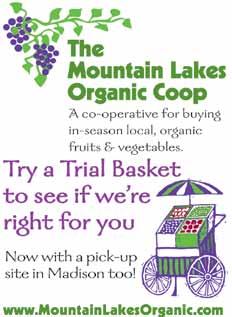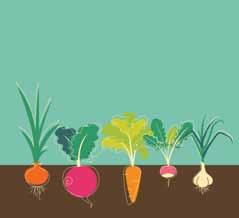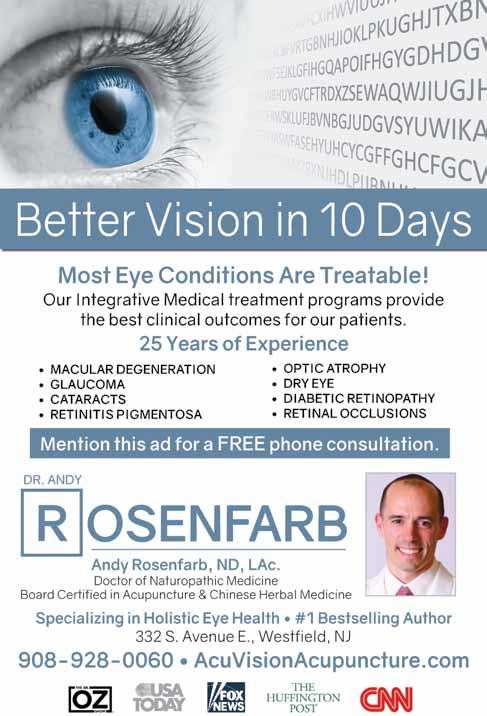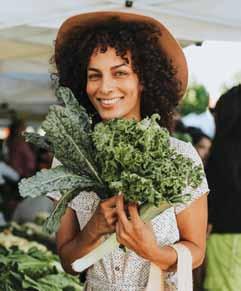
17 minute read
green living


HEMP GETS HOT Meet the Hardest Working Plant on the Planet by Julie Peterson green living Better Products All parts of the hemp plant are useful in multiple ways, and hemp has applications in textiles, construction, bioremediation, technology, nutrition and health, including cannabidiol (CBD). The seeds are rich in protein, essential fatty acids and vitamins. They can be eaten, ground into flour or pressed for oil that is used for cooking or in body care products. The stems undergo decortication to separate the long outer fibers (bast) from the short inner fibers (hurd). Hemp hurd makes extremely durable hempcrete for construction, absorbent and dust-free animal bedding or pellets for heating stoves. An exponential rise in the use of hemp is expected because it can replace products made from paper, wood, plastic, cotton and fossil fuels.
“Hemp fiber is going to dominate the market once we get to the full manufacturing potential,” says Erica Stark, executive director of the National Hemp Association, in Washington, D.C.
The first introductions consumers can expect include hemp paper products, such as plates and toilet paper, and biodegradable hemp bioplastics like cutlery and cups. Construction materials and other products are expected to quickly follow. A crop that was illegal in U.S. soil for more than half a century is now reaching for the sun. Industrial hemp, the low- or no-THC cousin to marijuana, has created high hopes among farmers, agricultural researchers, manufacturers and consumers. By 2019, America had become the world’s third-largest producer, behind Canada and China, where it’s been cultivated for 8,500 years.
“It’s the fastest-growing ag industry that we’ve ever seen,” says Tara Valentine, hemp specialist at the Rodale Institute, in Kutztown, Pennsylvania. Since hemp’s inclusion in the 2018 Farm Bill, Rodale’s hemp web page hits have grown 10-fold.

Natural Awakenings is proud to introduce ROOTS : Healing with Nature’s Pharmacy. This section is an educational tool for our readers. Each month the section will highlight natural medicines and provide useful information such as their history, their uses and their benefits. We will put you in contact with local businesses and practitioners that work within the belief system that nature is medicine. Are you a practitioner? Call Joe at 908-405-1515 to participate. We want to hear from you!

Environmentally Friendly The Institute of Papermaking and Printing, at the Technical University of Lodz, Poland, did a 2015 study comparing making paper from wood to making it from hemp. Among the findings: hemp takes four months to grow, while trees need 20 to 80 years. An acre of hemp can produce four or more times as much paper as an acre of trees. Hemp paper doesn’t need toxic bleaching and can be recycled twice as many times. Other studies concur.
Paper without deforestation would be a major benefit, but it’s a minor job on hemp’s profound résumé. “Hemp needs to be a part of every climate change conversation, not only because it sequesters huge amounts of carbon during cultivation, but also because construction products made out of hemp will continue to sequester carbon for up to 100 years,” says Stark.
Hemp could also help save the depleted soil on U.S. farmland that has been destroyed by tilling and synthetic fertilizers. “We have to rebuild the soil by putting carbon back in and increasing organic matter,” says Valentine. Hemp does this with a massive root biomass that breaks up compacted soils, improves water infiltration and reduces runoff and erosion.
Fast-growing hemp naturally suppresses weeds, needs no pesticides and isn’t picky about soil, water or latitude. By comparison, cotton is water-intensive and uses 25 percent of the world’s pesticides.
Income for Farmers Used in crop rotation, hemp’s soil-enhancing qualities can increase profits on subsequent crops. While cover crops don’t usually have return value, hemp provides additional revenue streams. But the revenue isn’t quite there yet, because the supply chain isn’t complete. Seed supply, farm equipment, education, processing facilities and manufacturers are all links that are developing simultaneously. “Fiber processing facilities will be available soon. Manufacturers are anxious to start incorporating hemp,” says Stark.
The lack of buyers isn’t deterring farmers. Neither are warnings that current harvesting equipment can spark disaster when hemp fiber wraps around rotating parts, heats up and combusts.
Dustin Enge, a third-generation farmer in Prairie du Sac, Wisconsin, started Honey Creek Hemp in 2017. He planted six acres of hemp. “I think it’s a long-term viable commodity for farmers. Right now, it’s the Wild West of agriculture. Everyone is trying different things,” says Enge, who modified a harvester for hemp. “I spent about two hours harvesting and 20 hours torching the fiber off my equipment.” Even so, he will plant more acres when he knows it will sell.
Behold the sprouting of the hemp industry as an ancient plant takes root in the modern world.
Julie Peterson writes from rural Wisconsin and can be reached at JuliePeterson2222@gmail.com.
CBD can do wonders for women’s health.

Cannabinoids interact with our body’s endocannabinoid system, helping to bring our body back to homeostasis, when all body functions are working well and in sync. When the body functions correctly, it loses dead cells and generates new cells to replace them. CBD helps regulate the various body cycles that result in cell regeneration and rejuvenation. A women’s body changes constantly due to the stresses of motherhood, hormones and daily life challenges. CBD can be a great way to naturally give our body a boost and help regulate those hormones and body functions that cause issues. CBD is also a great mood lifter with endless benefits for overall health.
The top seven benefits of CBD for women’s health are: premenstrual syndrome (PMS); anxiety and depression; anti-aging; mental health; pain and s t r e s s ; m e n o p a u s e ; a n d d i g e s t i o n a n d inflammation.

MATRIX REPATTERNING
Some injuries hang on because their energy gets trapped in the deeper tissues of the body. Using Matrix Repatterning, Dr. Larkin detects and releases these deeper injuries, improves electrical flow and allows the body to function normally again. Your cells remember trauma on a deeper level.

Call 908-930-0628 today to begin your journey back to normal. Dr. Clare M. Larkin, DC, CMRP drlarkin@optonline.net DrClareLarkin.com conveniently located in Warren
THE ROOTS OF GOOD HEALTH Thriving on a Plant-Based Diet

Whether identifying as vegan, vegetarian, pescatarian, flexitarian or other veggie-friendly variant, a growing number of Americans are moving away from meat products and toward plant-rich foods. Most come to a plant-based diet for personal, planetary or animal welfare reasons; however, they stay for the flavorful foods they discover along their dietary journey and the health benefits they reap.
Marly McMillen-Beelman was prescribed medications to alleviate symptoms of irritable bowel syndrome. “I knew I didn’t want to be on prescriptions, so I decided to change my diet, beginning by giving up meat, dairy and eggs. I immediately felt much better and my symptoms went away naturally,” says the Kansas
by April Thompson
City, Missouri, author of The Everything Vegan Meal Prep Cookbook and founder of Chopped Academy, an online resource for food bloggers. “Now I eat an even greater variety of food than I did before I went vegan.”
While only 3 percent of Americans identified as vegan and 5 percent as vegetarian in a recent Gallup Poll, a 2018
32 North Central NJ Edition NaturalAwakeningsNJ.com report by restaurant consultants Baum + Whiteman indicates that about 83 percent are eating more plant-based foods.
Embarking on a plant-based diet is a lifelong adventure, but it can take time to adjust. Experts recommend a healthy dose of self-love with the newfound fondness for fruits and veggies. “Give yourself some slack and realize that dietary changes do not happen overnight,” says April Murray, a registered dietician in Costa Mesa, California. “Start with familiar plant-based foods you already enjoy, and ease into trying new foods, whether tempeh or lentils.”
A plant-oriented diet also can be flexible; health advocates encourage individuals to find a diet that works for them and their families. Leah Webb,
the Asheville, North Carolina, author of Simple and Delicious Recipes for Cooking with Whole Foods on a Restrictive Diet, has adapted her diet over time to accommodate her family’s health needs. Although Webb has always maintained a plant-rich diet, she began incorporating some animal products when her son was born. “He had severe food allergies and asthma, and needed a more diverse diet,” explains Webb, whose daughter also has cystic fibrosis. Cutting out grains was a game-changer in “calming down his gut, where most of immune response lies,” says Webb. “He is now off asthma medication and the number of allergens he suffers from has dropped from seven to two.”
Webb’s family eats bountifully from their backyard garden, complemented by meat and produce from local farmers’ markets, where she can be certain the foods were produced sustainably and humanely. “I use meat to flavor soups or accent vegetables, rather than as the star of the show. I like to focus on real flavors, using lots of garlic, herbs and spices,” says Webb. Murray, author of The Everything Pegan Diet Cookbook: 300 Recipes for Starting—and Maintaining—the Pegan Diet, follows that diet, a mash-up of paleo and vegan regimens that focuses on whole, fresh and sustainable food high in healthy fats and vitamins. The Pegan diet eschews refined sugar and highly processed foods, while allowing meat, poultry, fish and eggs, as well as gluten-free grains, legumes and dairy products in small amounts.
“This diet can be helpful to different people in so many ways,” says Murray. “For people with diabetes and blood sugar dysregulation, this high-fiber diet can help lower blood sugar and insulin levels. Heart health will improve, as you’ll be eating less animal products, which can be high in cholesterol and saturated fat. Many individuals also find themselves losing unwanted weight as they get filled up so quickly with these whole foods.”
}I sought out Maria’s help in 2010 after many failed IVF’s. My infertility was due to poor egg quality and a thin uterine lining. With Maria’s personalized care, skill and dedication, I was able to conceive naturally and my daughter was born in 2012.~ – Brianne S., client Acupuncture for Women’s Health Increasingly, women are choosing Traditional Chinese Medicine to help restore and support their body’s natural balance without drugs, hormone replacement or surgery. Supported conditions include: » Infertility » Childbirth » Post-Partum » Irregular Cycles » Hormone Balance » Migraines » Painful Cycles

Maria Margate, L. Ac., LMT Certified Acupuncturist Certified Massage Therapist 104 Valley Rd., Montclair, NJ 07042 We accept insurance. Se habla español. 973.220.4242 | mariamargate@gmail.com AcupunctureMontclairNJ.com

MEET YOUR
Plant-Based Nutrition Made Easy While some worry about getting sufficient nutrients on a largely plant-based diet, nu



Bridgewater 319 Chimney Rock Road Bound Brook, NJ Clark 1255 Raritan Road, Unit #150 Clark, NJ Metuchen 645 Middlesex Avenue Metuchen, NJ Millburn—Union 2245 Springfield Avenue Union, NJ Montclair 701 Bloomfield Avenue Montclair, NJ Morristown 110 Washington Street Morristown, NJ Madison 222 Main Street Madison, NJ Newark 633 Broad Street Newark, NJ Princeton 3495 US Route 1 South Princeton, NJ Ridgewood 44 Godwin Avenue Ridgewood, NJ 07450 West Orange 235 Prospect Avenue West Orange, NJ trition experts say these fears are unfounded. “People think they need to calculate every nutrient, but if you eat a plant-centered, whole-foods diet, you will get every vitamin and mineral you need to thrive,” says Ocean Robbins, co-founder of the Food Revolution Network and author of The 31-Day Food Revolution: Heal Your Body, Feel Great, and Transform Your World. Legumes, nuts and seeds are all healthy, abundant sources of protein and iron.
Reed Mangels, author of Your Complete Vegan Pregnancy: Your All-in-One Guide to a Healthy, Holistic, Plant-Based Pregnancy, busts the myth that cow’s milk is a must for growing bones. “Calcium, vitamin D and protein are the nutrients we usually associate with bone health. One easy way to get all three is a soy-based or pea protein-based plant milk that is fortified with calcium and vitamin D,” says Mangels, adding that green vegetables like kale, bok choy, collards and broccoli are great sources of calcium.
“‘Eating the rainbow’ is great way to make sure you’re consuming a variety of nutrients,” offers London-based Ben Pook, who co-authored the cookbook So Vegan in 5 with his partner Roxy Pope. “Many vitamins, minerals and antioxidants bring their own distinctive colors to fruits and vegetables, so preparing colorful meals is a simple way of getting as many nutrients into your diet as possible.”
Getting Social Dietary changes can be challenging to navigate initially, particularly when faced with social situations ranging from family gatherings to cohabitation. Having a good plan going into such situations can help ease the transition, say experts. “Never show up to an event hungry. You will be
Tips to Stay on the Plant Track
Many new regimens begin with gusto, only to be abandoned because old diets die hard. Here are some expert tips for eating well over the long haul.
“Find plant-based options at your favorite restaurants, and be open to new flavors. I promise you, your taste buds will change,” says April Murray, dietician and author of The Everything Pegan Diet Cookbook. To keep the momentum and inspiration going, follow plant-based chefs on social media, she adds.
When switching to a plant-based diet, some miss the rich, fatty flavors found in meat, says Ben Pook, co-author of So Vegan in 5. “The trick we found is using ingredients rich in umami, which is a flavor commonly found in meat. One of our favorites is miso paste (fermented soybeans), which has an intense savory taste. We often add it to stews, pies and even pastas to deliver more depth of flavor. Soy sauce and porcini mushrooms are also a great substitute.”
“Sustainable change doesn’t happen overnight. If not sure what to cook, start with one big salad a week. When you get the hang of that, add in something else, like prepping snacks from scratch. Small things add up over time,” says Leah Webb, author of The Grain-Free, Sugar-Free, Dairy-Free Family Cookbook.
“Seek out loved ones who share your food values and nurture those relationships. You might be surprised how many people around you are also quietly trying to achieve similar goals,” says Ocean Robbins, founder of the Food Revolution Network.
“We put a lot of pressure on ourselves when we first switched to a plantbased diet. Shopping for vegan food and eating out at restaurants felt very overwhelming, and we found ourselves spending hours checking food labels. We’ve come to realize that veganism isn’t black or white and encourage others not to worry about making mistakes along the way,” shares Pook.
If we can’t resist temptation on occasion, that’s okay too, Murray says. “That one unhealthy meal won’t undo all the hard work you’ve put in. Get right back on track the next morning. Positivity is key.”
more likely to make a good decision if you are nourished. On the way there, remind yourself why you are making the transition to plant-based eating,” suggests Murray.
“I call myself a secular vegan because I don’t have a dogmatic approach to the way I eat. If I go to a family dinner and someone has made something special for me, but they used a non-vegan cheese, I will respect my family member’s effort and eat some of it. These situations will pop up from time to time, and the more you can be compassionate with yourself, the better,” says McMillen-Beelman.
“If you are living with people who are not joining you in making a dietary shift, agree to respect each other’s choices. Make it a shared learning journey rather than a power struggle,” says Robbins. For example, he suggests making a vegetarian base and allowing those that want animal products to add them as toppings. A burrito bar can accommodate all diets by allowing people to add their own fixings to a base of beans and tortillas, whether those be dairy op
tions like cheese and sour cream or veganfriendly guacamole and salsa.
For families with kids, being flexible and inclusive can help make changes feel more positive and sustainable. “We never eat processed foods at home, but parties are that time I tell my kids they can eat whatever they want,” says Webb.
“Get your children involved, so that they are more engaged in the eating experience. Let your children pick out recipes or snacks for the week. Make the food look pretty and it will taste more satisfying,” adds Murray.
Plant Prep Made Easy Plant-based chefs have plenty of kitchen hacks for making food prep and planning fun and easy. Robbins suggests finding go-to recipes to put on repeat. “Your prep time goes down a lot as you make the same dish, and the familiarity will help you develop lasting habits around new food patterns,” he says. Webb incorporates a healthy protein, fat and vegetable into every meal, even breakfast, but cooks in batches and freezes portions or repurposes leftovers to simplify mealtimes. “You’ll get burned out if you try to cook something from scratch every meal,” says Webb. “We eat a lot of eggs because we raise chickens, so I’ll do baked frittatas I can reheat during the week.” Advance meal prep can take the pressure off busy times like the weekday breakfast rush, adds Robbins. One of his favorite breakfasts involves soaking oats and chia seeds overnight, which he tops in the morning with some unsweetened soy or coconut milk, chopped banana, frozen blueberries, and a dash of maple syrup, va
GRAND RE-OPENING Dedicated to personal customer service since 1971
5000 + Natural Vitamins & Supplements That Doctors Love when you use discount code: Hilifevitamins2020 10% Off
CBD Products gummies, teas, oils, pain relief cream and lotion.
Trusted Products & Doctor Lines
Call, email or visit today to learn how the right vitamin or supplement may impact your health.
Vitamins & Supplements for Control Blood Pressure Joint Pain Relief • Women’s Health Allergy Relief • Stress Relief
a local store with a global reach

800-622-8877 Support@HiLifeVitamins.com shop local from home at HiLifeVitamins.com
nilla and nutmeg. “It’s full of omega-3 fatty acids, protein, antioxidants and phytonutrients,” he says.
Webb encourages people to get out of their food comfort zones by experimenting with approximate ingredients, like swapping kabocha or honeynut squash for butternut squash.
Robbins also suggests making social connections with others on the same path by cooking them a meal, organizing a meal

swap or sharing extras. “It’s not a diet or a fad; it’s a way of life. Start where you are and remember it’s not about perfection, it’s about progress. Have love, dignity and compassion toward yourself and others along the journey,” he says.
April Thompson is a freelance writer based in Washington, D.C. Connect at AprilWrites.com.
Navigating the lexicon of plant-based diets can be tricky, and choosing a diet even trickier. Here’s a brief guide to some of the commonly used terms. Flexitarians eat a mainly vegetarian diet, but will consume meat on occasion. Pegans (a term coined by Dr. Mark Hyman, who follows the diet) focus on eating vegetables, fruits, nuts, seeds, meat, fish and eggs, while avoiding dairy, grains, legumes, sugar and processed foods. Pescatarians like radio host Howard Stern eat fish, seafood and other forms of animal products such as dairy, but don’t eat other forms of meat such as chicken, beef or pork. Plant-based diets, followed by celebrities like Ben Stiller, consist mostly or entirely of foods derived from plants, including vegetables, grains, nuts, seeds, legumes and fruits, with few or no animal products. Vegans don’t consume any animal products, including eggs, dairy, honey or gelatin. Famous vegans include Ellen DeGeneres, Betty White, Beyonce, Bill Clinton, Madonna and Venus Williams. Vegetarians refrain from meat and seafood, but will consume dairy or other animal byproducts such as honey. Wellknown vegetarians include Albert Einstein, Arnold Schwarzenegger, Doris Day, Jane Goodall, Kristen Wiig and Prince. Plant-Based Primer











